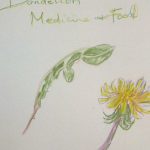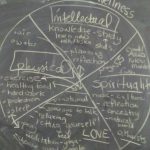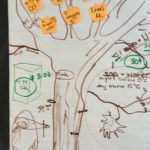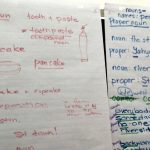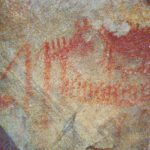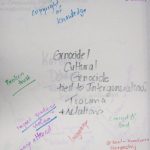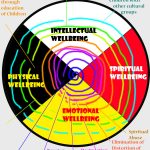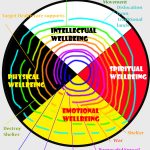Resources Used
Resources from Tungasuvvingat Inuit was used in the project in the first PD session.
The Provincial Subject Association for teachers of First Nations, Métis and Inuit Studies and Indigenous languages is welcoming to all teachers interested in culturally authentic education. It has many great resources we considered.
The International Fund for Animal Welfare’s Northern Dog Curriculum Project was a source of some information adapted for the teacher PD session resources.
The Algonquin Way Cultural Centre near Pikwakanagan, Anishinabeg is a centre that has online resources for teaching about the Algonquins of Eastern Ontario. There are lessons, and an online glossary of Anishinabemowin words and other resources.
Interview with Algonquin author, Rick Revelle.
https://www.dundurn.com/news/interview-rick-revelle-author-i-am-algonquin
Newspaper article about Algonquin author, Rick Revelle.
http://www.thewhig.com/2015/10/08/revelle-writes-about-his-algonquin-roots
A brief overview of the multiple intelligences theory, originally published by Howard Gardner in 1983. It supports the need for diverse approaches to teaching all learners including Indigenous adults and ELLS who are newcomers to Canada.
Dumont, Albert, et al. AninaÌTigo-AniÌBiÌShan Kichi-Makwang = The Maple Leaves of Kichi Makwa = Les Feuilles D’eÌRable De Kichi Makwa. Turtle Moons Contemplations, 2011.
This children’s picture book by an Algonquin elder and author is trilingual in Algonquin, English and French and is being used in the ESL BO.
Dumont, Albert. Of Trees and Their Wisdom: Poetry and Short Stories. Turtle Moons Press, 2009.
This book by Algonquin elder and author, Albert Dumont, has short stories and poetry. The book is organized in four themes: Maple, Birch, Pine and the Forest. It is used in the BO and DO courses.
Revelle, Rick. I Am Algonquin: An Algonquin Quest Novel. Dundurn, 2013.
This novel by an Algonquin author who is from Ardoch First Nation is used in the ESL DO course. See the unit plan and handouts that relate to it and other Indigenous literature.
Pendziwol, Jean E. and Debon, Nicolas. The Red Sash. Groundwood Books, 2017.
The Red Sash is a children’s picture book about a Métis family and is being used in ESL AO/BO combined courses.
Lane, Phil, et al. The Sacred Tree. Four Worlds International, 2012.
A reference for teachings that inform wellness in life, including medicine wheel teachings.
Landon, Rocky and MacDonald, David. A Native American Thought of It: Amazing Inventions and Innovations. Annick Press, 2008.
This book is a valuable resource in understanding key traditional knowledge and was used by the teacher of the ESL DO unit.
Amant, Deb St. First Nations, Métis, and Inuit Student Success. Pearson Canada, 2014.
This is from the Teacher Education Series by Pearsons Post Secondary and was written by an Indigenous educator in Ontario and co-ordinated with assistance of FNMIEO.
Switzer, Maurice. “We Found Somebody.”
This newspaper article by Nippissing First Nation writer was used in the ESL DO course.
This speech entitled “We Walked to Something” was by Joseph Boyden and is used in the ESL DO unit.
https://www.mheducation.ca/web_resources/sch/BOYDE_WALK_TO_MORNING.pdf
“An Uncertain Journey on a Jagged Road” by Forrest Rain Shapwaykeesic (a personal opinion) is used in the ESL DO course.
https://prezi.com/gqldhfhveuuf/an-uncertain-journey-on-a-jagged-road/
Mishenene, Rachel A., and Pamela Rose Toulouse. Strength and Struggle: Perspectives from First Nations, Inuit, and Métis Peoples in Canada. McGraw-Hill Ryerson, 2011. This book has many different forms of contemporary literature by Indigenous authors. We use this in several courses.
In ESL DO, we are using:
- “Waawaate Fobister: A Shining Star” by Lisa Charleyboy
- “An Afternoon in Bright Sunlight” by S. Bruised Head (short story)
- “3740166701” by John Adrian McDonald (poem)
- “The Amazing Sense of Shake” by Cherie Dimaline (short story)
- Of Trees and Their Wisdom: Poetry and Short Stories by Albert Dumont (assorted poems from the “Forest” section)
We used this curriculum guide from the MOE.
http://www.edu.gov.on.ca/eng/curriculum/secondary/esl912currb.pdf
This is Ontario First Nation, Métis and Inuit Education Policy Framework referred to in materials from the second PD session.
A copy of the document from the National Indian Brotherhood, published originally in 1972 is at this link. It was referred to in our second PD session.
This web link has several links to key government documents revelant to Indigenous education in Canada including the Report of the Truth and Reconciliation Commission (2015) and the Royal Commission on Aboriginal Peoples (1995), both relevant to Indigenous education.
https://www.aadnc-aandc.gc.ca/eng/1307458586498/1307458751962
This website has a search engine to search for images, films, etc. that are provided copyright-free by the creators or are in the public domain. It was used to find images for the handouts from ESL BO.
Resources Created
These resources will open in your browser in a new tab, or be downloaded to your computer.



